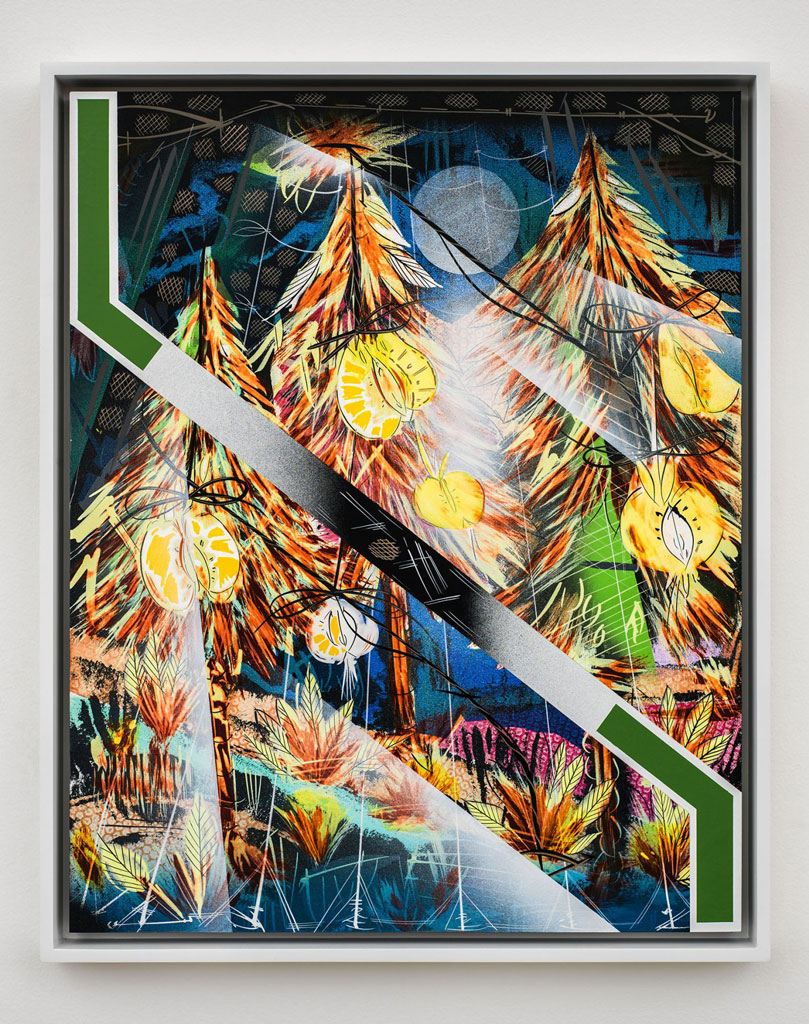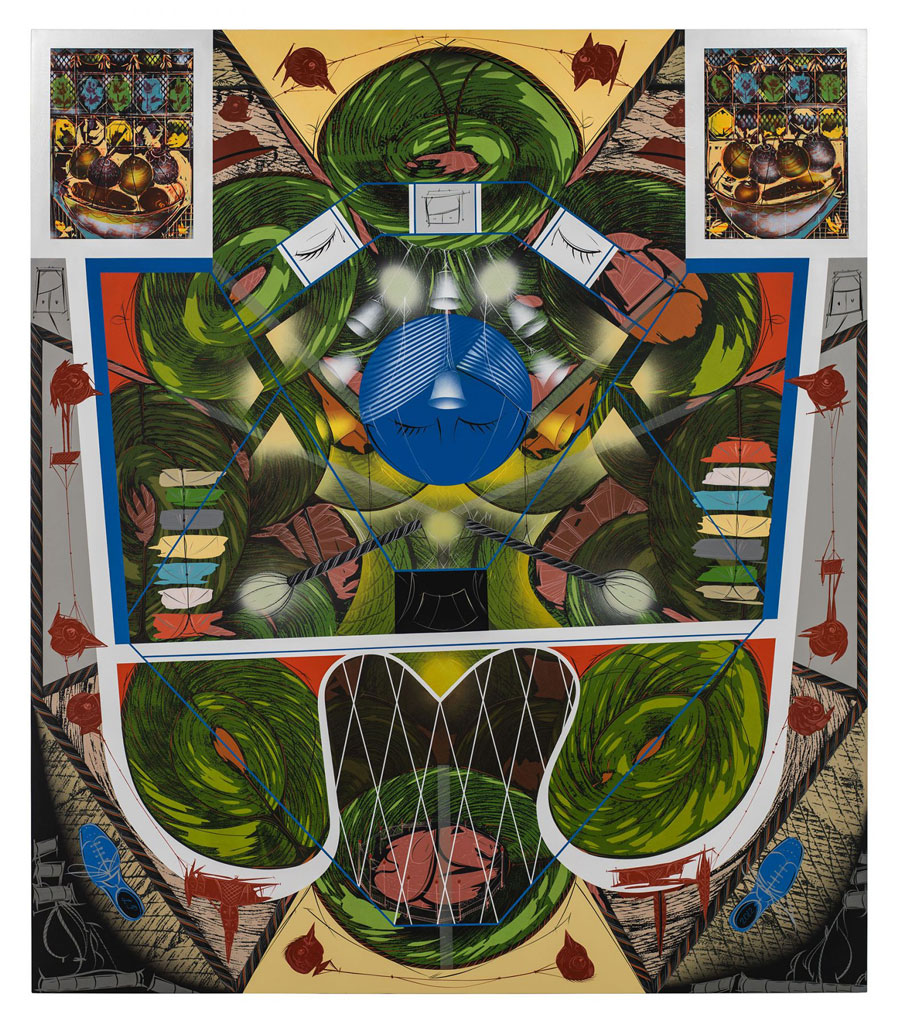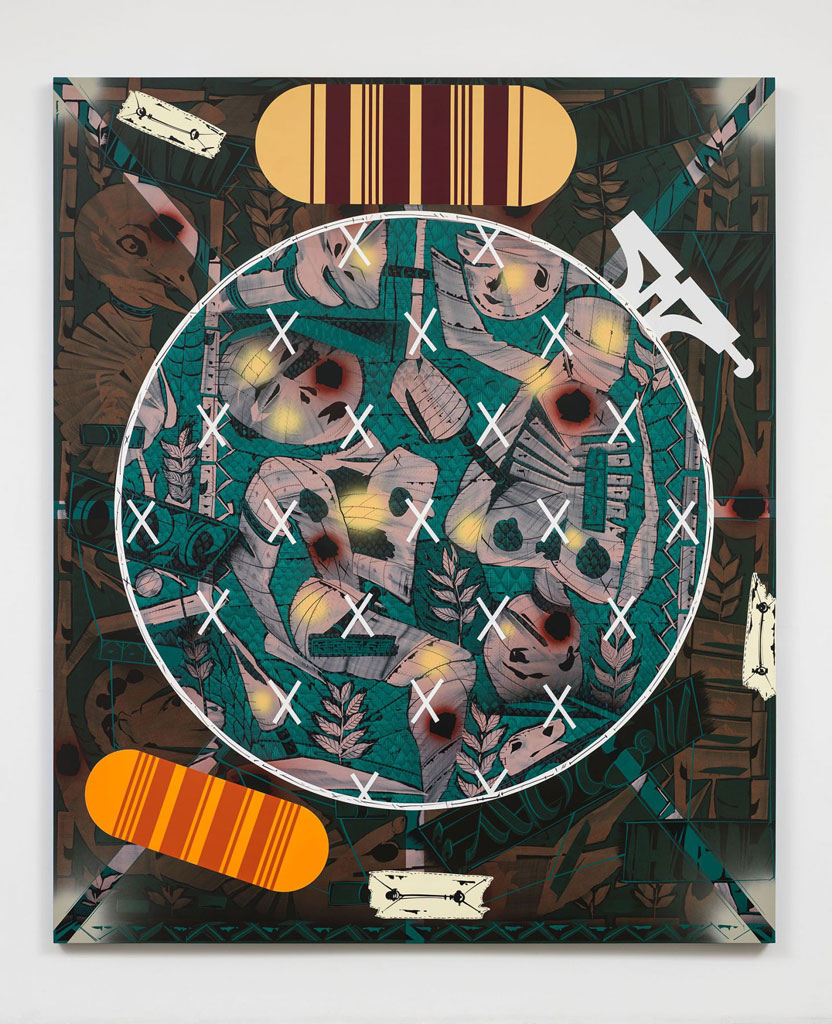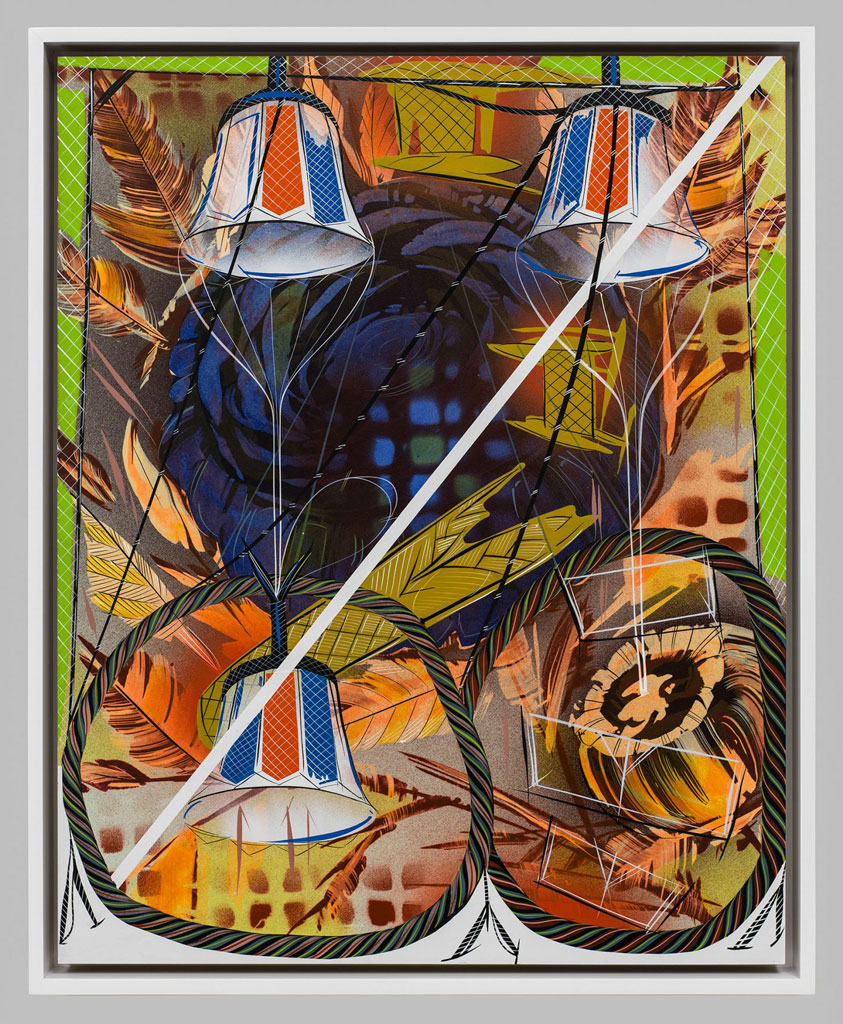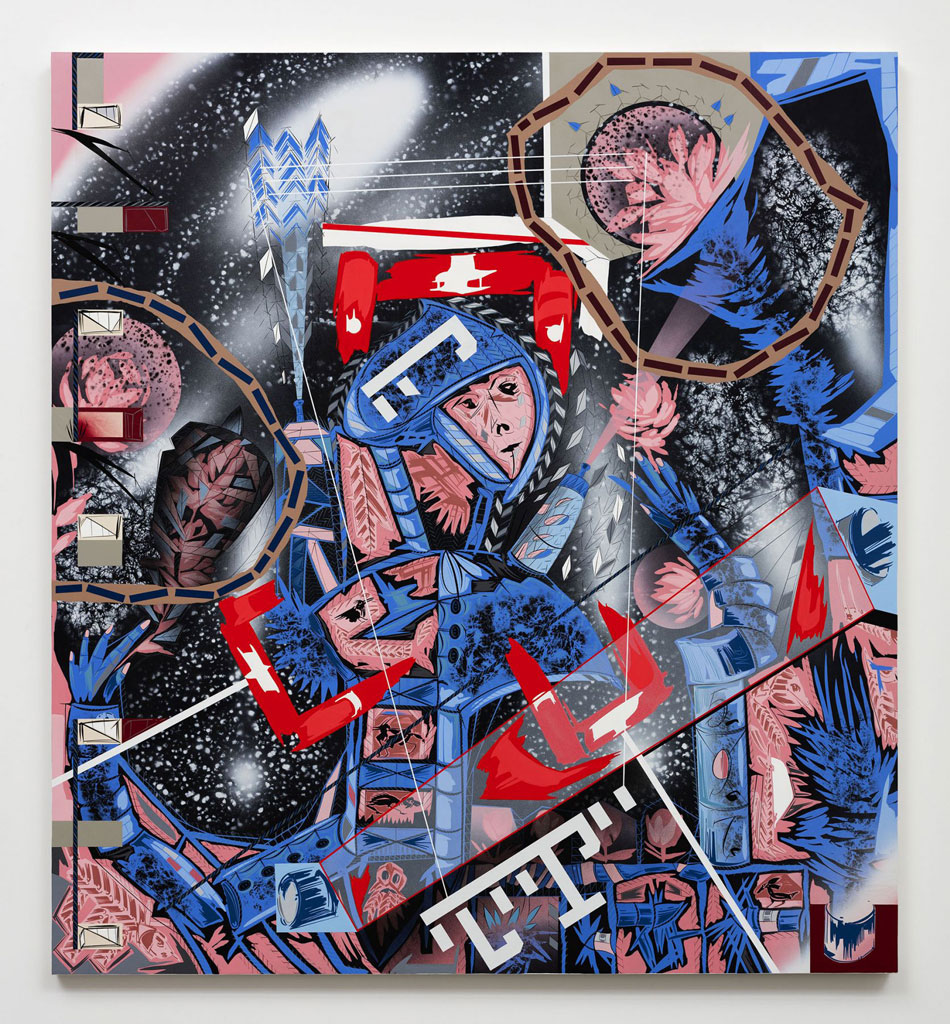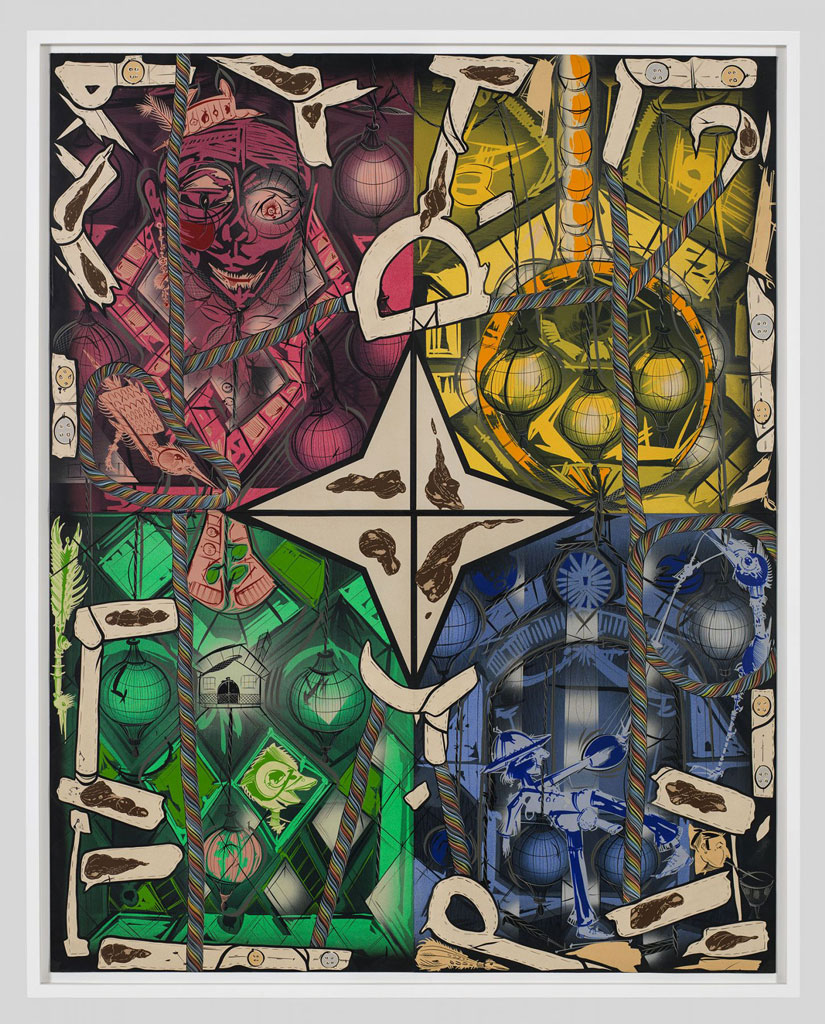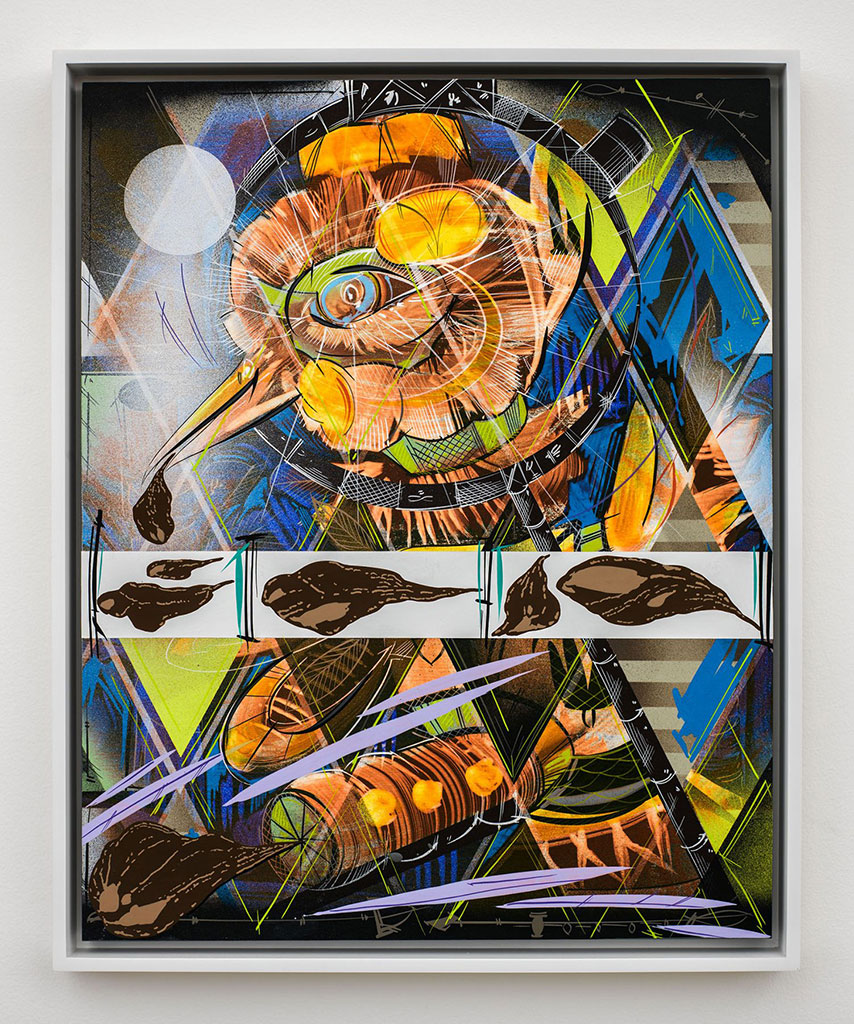ART CITIES:N.York-Lari Pittman
 During the mid-1970s, Lari Pittman attended California Institute of the Arts in Valencia, California, the institute’s strong feminist arts program challenged the devaluation of art forms traditionally associated with craft, and it was his engagement with this program that inspired Pittman’s interest in undermining aesthetic hierarchies and embracing the decorative arts. Pittman’s strong affinity for the decorative can be seen throughout his many bodies of work and it has contributed to his singular visual style.
During the mid-1970s, Lari Pittman attended California Institute of the Arts in Valencia, California, the institute’s strong feminist arts program challenged the devaluation of art forms traditionally associated with craft, and it was his engagement with this program that inspired Pittman’s interest in undermining aesthetic hierarchies and embracing the decorative arts. Pittman’s strong affinity for the decorative can be seen throughout his many bodies of work and it has contributed to his singular visual style.
By Dimitris Lepesis
Photo: Lehmann Maupin Gallery Archive
For the body of work that is on presentation in his solo exhibition “Found Buried”, Lari Pittman presents a series of new paintings and works on paper that combine the genres of landscape, portraiture, and still life. Pittman continues to address the histories of identity, violence, class, and human nature through the polemicized lens of decoration, decor, and the decorative embodied in the memento mori and other forms of commemoration. Pittman is best known for his unique visual aesthetic that has established him as one of the most significant painters of his generation. In this exhibition, he continues his signature, densely-layered painting style that includes a lexicon of signs and symbols, a compilation of varied painting techniques, and a clear homage to the applied and decorative arts. The title of the exhibition, Found Buried”, relates to ideas of excavation—personal, political, and historical. This alludes both to the way one experiences his work as well as Pittman’s approach to painting. For each work, Pittman builds complexly layered compositions that mediate the tension between color, text, and imagery; figure, landscape, and decoration; and chaos, order, and clarity with remarkable dexterity. He has an innate ability to give each element within a painting equal space and significance. This creates multiple entry points for the viewer, who is invited to do their own excavation of sorts, reading and interpreting the various layers of each work in their own way. The works in the exhibition feature symbols such as pomegranates (which are often connected to power and imperialism) and tools related to labor and potential violence, as well as decorative objects such as vases, chalices, lamps and an assortment of art objects. Human figures are adorned with theatricalized, imaginary garments and insignia that destabilize expectations of Colonial American, European, and indigenous cultural aesthetics. By merging these seemingly opposing signifiers, Pittman complicates our understanding of colonial identity and its contemporary legacy. In one painting, Piittman portrays a scene comprised of three figures adorned with indigenous headdresses and colonial era garments, fragmented and rendered amidst abstracted patterns of pomegranates and chalices. This painting presents a conceptual reading of violence (self-imposed, physical, and psychological) surrounding oppositional identities, class, and place. In his works on paper, Pittman depicts tools of labor in relation to decorative objects that signify wealth and power.
Info: Lehmann Maupin Gallery, 501 West 24th Street, New York, Duration: 5/3-25/4/20, Days & Hours: Tue-Sat 10:00-18:00, www.lehmannmaupin.com
